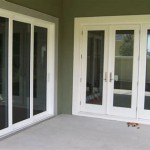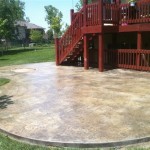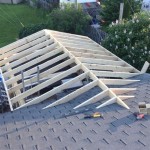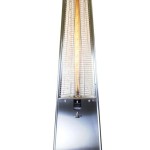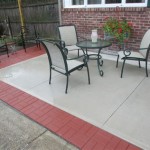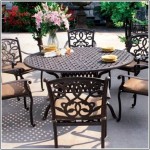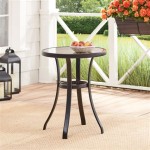How to Cover Patio Pavers: A Comprehensive Guide
Patio pavers offer an attractive and durable surface for outdoor living spaces. However, there are situations where covering patio pavers becomes desirable. This might be due to aesthetic preferences, a need for enhanced weather protection, a desire to create a softer surface for activities, or even the temporary need to protect the pavers from damage during a construction project. Understanding the available options and their respective benefits and drawbacks is crucial for making an informed decision.
The selection of a suitable covering depends on several factors, including budget, desired aesthetic, intended use of the patio, and the expected lifespan of the covering. Permanent solutions will require more investment and planning compared to temporary measures. This articles provides a detailed overview of different methods and materials for covering patio pavers, offering practical guidance for homeowners and contractors alike.
Permanent Covering Solutions
Permanent coverings are designed for long-term use and are generally more durable and weather-resistant than temporary options. These solutions often involve structural modifications or the installation of new surfaces over the existing pavers.
Overlaying with Concrete: One robust option is to pour a concrete overlay over the existing paver surface. This creates a seamless and uniform surface, allowing for a completely new aesthetic. Before pouring the concrete, it is essential to prepare the paver surface properly. This involves thoroughly cleaning the pavers to remove any debris, dirt, or algae. Cracks or unevenness in the paver surface should be addressed to prevent these issues from telegraphing through the concrete overlay. A bonding agent should be applied to facilitate adhesion between the pavers and the concrete. The concrete mix should be specifically formulated for overlay applications, often incorporating polymers to enhance flexibility and reduce the risk of cracking. The overlay can be stamped, stained, or textured to achieve a desired look. This option provides a durable and customizable surface, ideal for areas subject to high traffic or harsh weather conditions.
Installing a Deck Over Pavers: Building a deck over patio pavers offers a raised platform that can transform the appearance of the outdoor space. This method typically involves constructing a frame using pressure-treated lumber or composite materials. The frame is then supported by concrete piers or adjustable supports that rest on the paver surface. Decking boards, made from wood, composite, or PVC, are installed on the frame. This creates a comfortable and visually appealing surface for outdoor living. Decking provides good drainage, as water flows between the boards, preventing pooling. It also elevates the surface, potentially improving views and creating a distinct separation between the patio area and the surrounding landscape. The height of the deck is adjustable, allowing for the creation of a level surface even if the underlying pavers are slightly uneven.
Applying Epoxy or Polyurethane Coatings: These coatings create a durable and protective layer over the paver surface. Epoxy and polyurethane coatings are available in a variety of colors and finishes, including clear, opaque, and metallic. They can also be mixed with decorative aggregates, such as colored quartz or flakes, to create a visually appealing surface. Before applying the coating, the pavers must be thoroughly cleaned and any cracks or imperfections repaired. The coating is typically applied in multiple layers, allowing each layer to cure properly before applying the next. These coatings are resistant to abrasion, chemicals, and UV radiation, making them suitable for high-traffic areas and outdoor environments. They also provide a seamless and easy-to-clean surface.
Using Outdoor Tiles: Porcelain or ceramic tiles designed for outdoor use can be installed directly over the pavers. This option offers a wide range of design possibilities, as tiles are available in various sizes, colors, patterns, and textures. The pavers need to be clean and level, and a suitable adhesive mortar must be used to ensure proper adhesion. Grouting between the tiles is essential to prevent water penetration and to provide a finished look. Outdoor tiles are durable, weather-resistant, and easy to maintain. They can withstand freezing temperatures and direct sunlight without fading or cracking. The installation process is similar to installing tiles indoors, but the choice of materials and installation techniques should be specifically tailored for outdoor applications.
Semi-Permanent Covering Solutions
Semi-permanent coverings offer a balance between durability and flexibility. They are designed to last for several years but can be removed or replaced relatively easily if desired. These options are ideal for homeowners who want a more long-term solution than temporary coverings but are not ready to commit to a permanent change.
Outdoor Rugs and Carpets: Large outdoor rugs or carpets can cover a significant portion of the paver surface, providing a softer and more comfortable area for seating or play. These rugs are typically made from synthetic materials such as polypropylene or olefin, which are resistant to water, fading, and mildew. They are available in various sizes, colors, and patterns, allowing for customization of the patio's aesthetic. While not a complete covering, strategically placed rugs can transform the feel of a patio and define distinct zones within the space. It is important to choose rugs specifically designed for outdoor use, as indoor rugs may not withstand the elements. Regular cleaning, such as hosing off the rug and allowing it to dry thoroughly, is necessary to maintain its appearance and prevent the growth of mold or mildew.
Interlocking Deck Tiles: These tiles, typically made of wood, composite, or plastic, snap together to create a floating surface over the pavers. They are easy to install and remove, making them a versatile option for covering a paver patio. Interlocking deck tiles provide a comfortable and visually appealing surface, similar to a traditional deck. They also allow for good drainage, as water can flow between the tiles. The modular design allows for customization of the size and shape of the covered area. Interlocking deck tiles are available in various styles and colors, offering flexibility in design. They are a relatively low-maintenance option, requiring only occasional cleaning. The tiles can be easily lifted for cleaning underneath, preventing the accumulation of dirt and debris.
Applying Paver Sealer with Tint or Color: While not a complete covering in the traditional sense, applying a tinted or colored paver sealer can significantly alter the appearance of the pavers. A paver sealer protects the pavers from staining, fading, and water damage, while the tint or color adds a new layer of aesthetic appeal. This option is less intrusive than other covering methods, as it does not add any significant height or structural elements to the patio. The existing paver surface is simply enhanced with a protective and decorative coating. The choice of tint or color can be used to complement the surrounding landscape or to create a contrasting visual element. It is important to choose a high-quality paver sealer specifically designed for the type of pavers being covered. The sealer should be applied according to the manufacturer's instructions, typically in multiple coats. This method can refresh the look of the patio while providing added protection to the paver surface.
Temporary Covering Solutions
Temporary coverings are ideal for short-term needs, such as protecting pavers during construction or creating a shaded area for a special event. These solutions are typically inexpensive and easy to install and remove.
Tarpaulins and Protective Sheets: These are commonly used to protect the pavers from construction debris, paint spills, or other potential damage. Tarpaulins are available in various sizes and thicknesses, offering different levels of protection. Heavy-duty tarpaulins are more durable and resistant to tearing, while lighter-weight tarpaulins are more affordable. Protective sheets, such as polyethylene film, can be used to cover larger areas. These coverings are easy to install, simply by laying them over the pavers and securing them with weights or tape. They are also easy to remove and dispose of after use. While not aesthetically pleasing, tarpaulins and protective sheets provide a practical and cost-effective way to protect the pavers from damage during temporary situations.
Outdoor Shade Structures: Shade sails, pergolas, and umbrellas can provide temporary or semi-permanent shade over a portion of the paver patio. These structures not only protect the pavers from direct sunlight but also create a more comfortable outdoor space. Shade sails are made from fabric and are suspended between anchor points, providing a stylish and functional shade solution. Pergolas are typically constructed from wood or metal and provide partial shade with an open lattice roof. Umbrellas are portable and can be easily moved to provide shade where needed. These structures can be easily installed and removed, making them a versatile option for creating a temporary shaded area on the paver patio. The choice of structure depends on the desired level of shade and the aesthetic preferences of the homeowner.
Removable Floor Mats and Tiles: These can provide a temporary, cushioned surface for specific activities, such as exercise or children's play. These mats and tiles are typically made from foam or rubber and are available in various sizes and colors. They are easy to install and remove, making them a convenient option for creating a temporary play area or exercise space on the paver patio. Removable floor mats and tiles provide a comfortable and safe surface for activities, protecting both the pavers and the individuals using the space. They are also easy to clean and maintain, requiring only occasional wiping or hosing off.

How To Install Pavers Over A Concrete Patio Family Handyman

Patio Makeover Lay Brick Pavers Over Concrete The Money Pit

8 Ways To Upgrade Your Backyard With Pavers Bob Vila

Take The Fun Outside With A Paver Patio Seattle Times

Easy Concrete Patio Coverup Ideas The Garden Glove

A Quick Guide To Permeable Paver Patios Truegrid Pavers

Pavers For Fire Pit Ground Covers Pros And Cons Viking

Low Maintenance Ground Covers To Go With Your Pavers

Innovative Paver Patio Ideas For A Stylish Outdoor Retreat

A Concrete Paver Patio From The Bottom Up Fine Homebuilding
Related Posts

